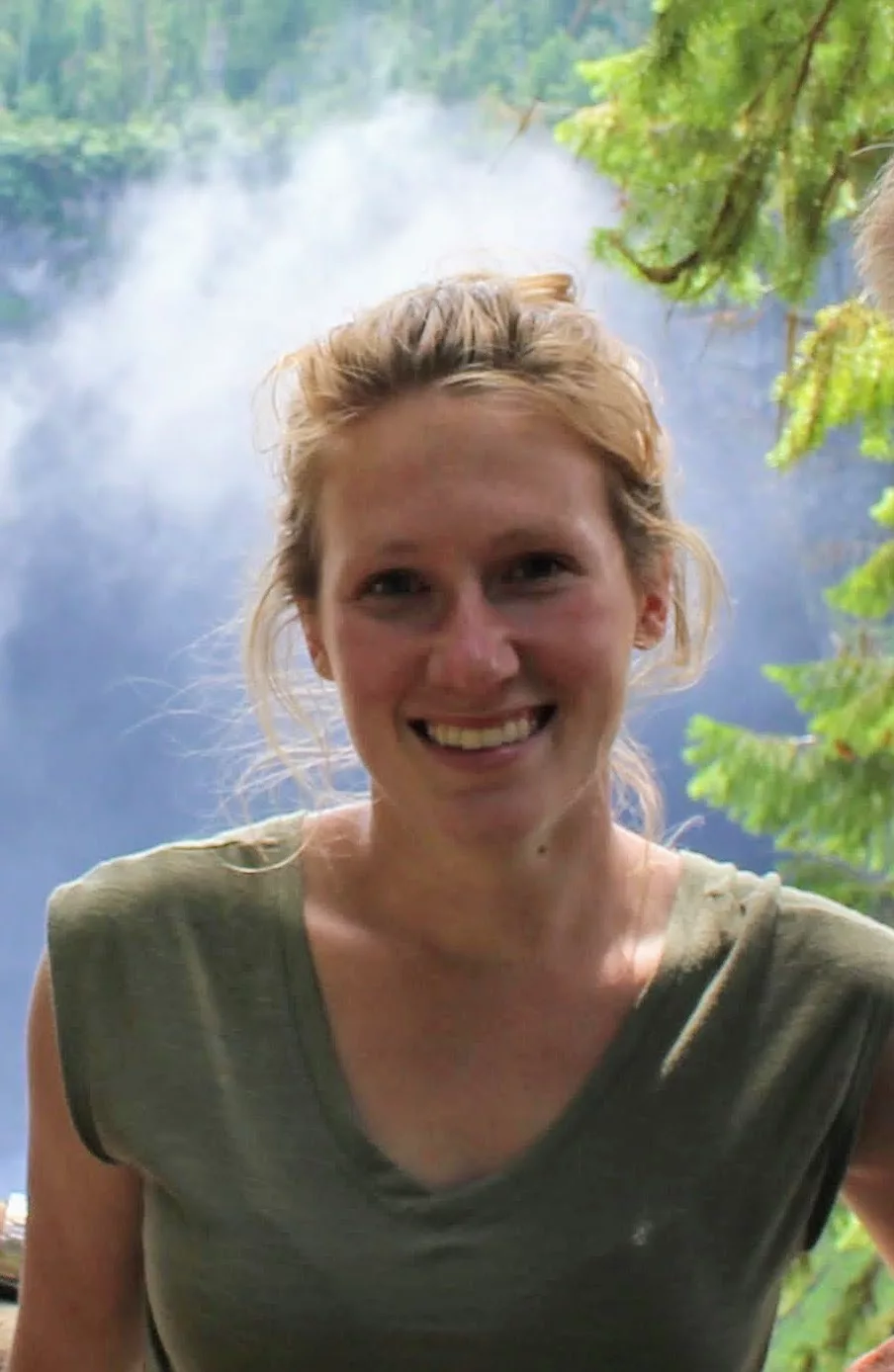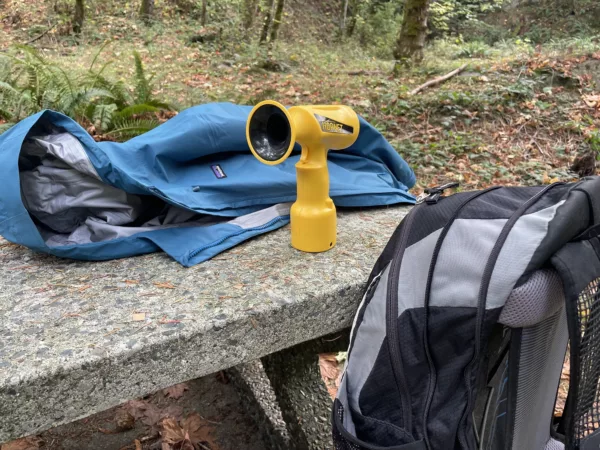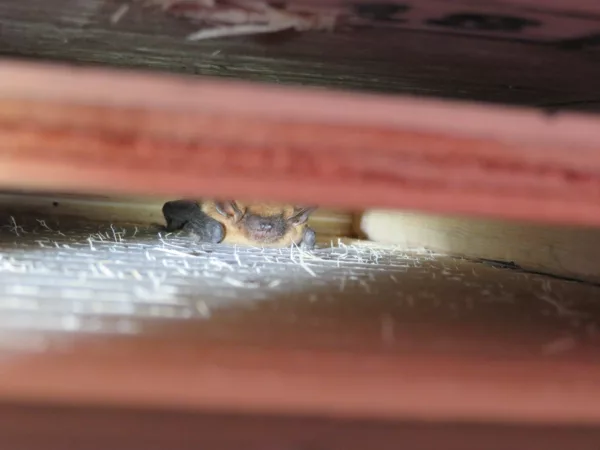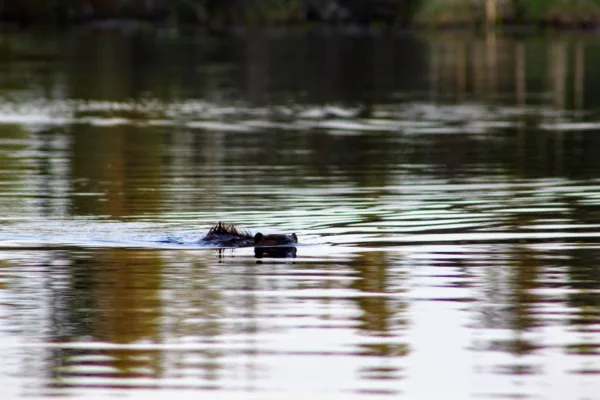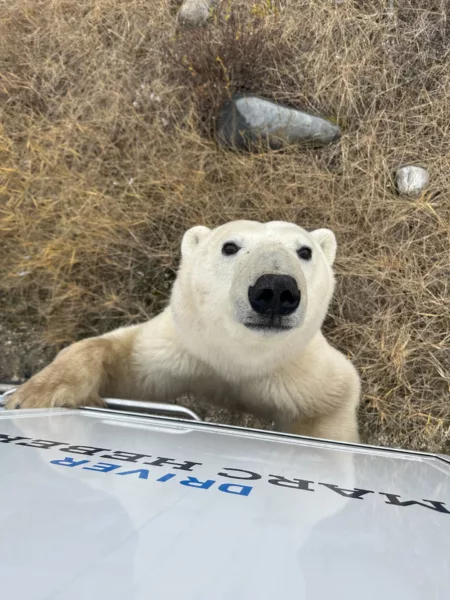Wildlife You’re Likely to See on Your Next Hike in Canada

We talk about grizzlies and cougars a lot when we talk about outdoor adventures in Canada, and for good reason—we need to know how to react to an encounter or attack. As often as we discuss them, though, the chances of seeing one of these is much less likely than having the daylights scared out of you by a grouse. Instead, let’s talk about likely encounters. These, of course, will vary by the diverse regions in Canada, but we’ve rounded up as likely of a list as possible. Some, like those scolding squirrels, are hard to miss. Others require a bit more stealth and a pair of keen eyes to belong in the likely-to-encounter category.
Red Tailed Hawk
 Sylvia Dekker
Sylvia Dekker
You can spot these auburn birds of prey in town, on the farm or in the backcountry—that’s how common they are. From below, they are cream coloured with an orange tinted, fanned out tail. If you spot them perched, their bodies are mainly brown with that obvious rust-red tail.
Fun fact about red tailed hawks: This bird has a scream that’s famous, as it is often used in movies to set a western, foreboding or outdoorsy scene.
What to do if you see a red-tailed hawk in the wild: Given their eyesight is eight times better than yours, they’ve probably already spotted and dismissed you as a viable snack, so just admire their effortless soar.
Where you can find it: All over Canada.
Pine Squirrel
 Sylvia Dekker
Sylvia Dekker
Even if you don’t spot these fellas first, they’ll let you know they’re around with their loud, scolding chatters. With a cute, bushy rust-red tail, cream coloured belly and fluffy ear tufts, they’ll sit just out of reach and make sure every other animal in the area knows you’re there too.
Fun fact about pine squirrels: Have you ever noticed piles of cone scraps perched on logs or the snow in the forest? Instead of hibernating, pine squirrels create food storages made up of fungi stored between tree branches and caches of nuts and cones.
What to do if you see a pine squirrel in the wild: Chatter back.
Where you can find it: All over Canada.
Beaver
 Sylvia Dekker
Sylvia Dekker
This Canadian icon hardly needs describing. Their dark, furry bodies, large flat tail, impressive lodges and habit of leaving distinctive chew marks in their wake are all things young ones are familiar with.
Fun fact about beavers: Before you judge their apparently poor dental hygiene, you should know their big strong teeth are orange thanks to the enamel coating that protects them from all the tough work they do.
What to do if you see a beaver in the wild: Beavers aren’t inherently aggressive, but like most wildlife, prefer to be left alone. Their tail slaps against the water as a warning to their family and for you to take a hint.
Where you can find it: All over Canada.
Osprey
 Sylvia Dekker
Sylvia Dekker
Given Canada supports one third of the world’s osprey population, the likelihood of spotting one of these white and brown raptors hunting over a lake or perched on a stick nest is high. These beauties have dark wings, a white belly and a white head with a dark line streaking over their eyes. From below, they look like a flying ‘M’ with brown and white underwings. They will dive talons first into the water for a fishy meal.
Fun fact about ospreys: Ospreys are the only other birds besides owls that have a reversible outer toe, which allows them to grasp slippery prey with two talons in front and two behind.
What to do if you see an osprey in the wild: Show it your Osprey gear.
Where you can find it: All over Canada.
Black Bear
 Sylvia Dekker
Sylvia Dekker
Despite their name, black bears come in a range of colours including cinnamon and brown. The most obvious difference between black bears and grizzlies is the shoulder hump grizzlies have. It is more likely you’ll see tracks over the bears themselves. You can often tell the difference between grizzly and black bear prints by the length of the claws—black bears have shorter claws, meaning the nail marks will be closer to the toe prints.
Fun fact about black bears: British Columbia is home to cream-coloured black bears, a subspecies known as spirit bears with a recessive gene that gives them their white coats.
What to do if you see a black bear in the wild: In general, black bears are non-confrontational. However, get between mothers and cubs, act aggressive, accidentally startle them or get too close to their food and you may put them on the defensive. If you spot a black bear on your adventures, keep your distance, talk to them so they know you’re a human and leave the area. Carry bear spray and know how to use it!
Where you can find it: They are common throughout the Pacific Northwest’s forests and mountains.
Grouse
 Sylvia Dekker
Sylvia Dekker
My heart’s pounded more often and harder thanks to grouse than any other wildlife encounter. Strutting unobtrusively along the forest floor in well-camouflaged browns, greys and light-coloured speckles, grouse are a chicken’s shy, quiet cousin. It’s only once you’ve achieved absolute peace in your forest bathing venture when the aptly nicknamed thunder-chickens flap away with sudden, thumping wingbeats.
Fun fact about grouse: These birds are feathered from their nostrils to their feet. Literally. If you’ve ever heard a low thumping noise somewhere in the forest that sounds like a motorbike starting up, that’s a male grouse beating his wings to attract a female.
What to do if you see a grouse in the wild: Laugh at yourself for being scared by a chicken.
Where you can find it: There are five species of grouse in Canada with varying distribution, but you can find grouse in every Canadian province.
Black Capped Chickadee
 Sylvia Dekker
Sylvia Dekker
These cute, friendly birds are welcome company on any outdoor excursion. With a cheerful, slightly nasal “chickadee-dee-dee” song, light yellow bellies, blue-grey wings and a black and white head, encountering one of these birds is bound to make you smile.
Fun fact about chickadees: Their namesake noise is just one of 16 different sounds chickadees can make.
What to do if you see a chickadee in the wild: Enjoy the company!
Where you can find it: Spot the chickadee in all provinces and some southern areas of the Yukon and Northwest Territories.
Deer
 Sylvia Dekker
Sylvia Dekker
Depending on where you are in Canada, the species of deer you may encounter will vary. Technically, the term deer includes elk, moose and caribou, but overall, these three are not as commonly seen as mule deer or whitetail deer. Mule deer have a ropy, black-tipped tail and bucks grow forked antlers. Whitetail deer have that fluffy tail that lifts into a bright white waving flag when they run scared, and bucks grow antlers with tines all off one main beam.
Fun fact about deer: Their antlers are shed every year and begin regrowing in the spring. As they grow, they are covered with blood vessel-filled, fuzzy looking velvet. This will die and slough off before the rut (breeding season), leaving the hard antler behind for dueling for does.
What to do if you see deer in the wild: Deer are usually skittish, so you’ll often hear them bounding away before you see them. Give curious individuals space and leave fawns alone.
Where you can find it: All over Canada, but species will depend on where you are located.
Canada Jay
 Sylvia Dekker
Sylvia Dekker
Also known as a whiskey jack, gray jay or camp robber, these curious birds frequent trail heads and picnic areas for human snacks. Some will even land on your hand to check out whether you’re offering treats or not. (We don’t condone feeding any wildlife, including birds). They’re easy to identify, with a white throat and forehead, light gray belly and a dark gray beak, nape and wings.
Fun fact about Canada jays: True Canadians, these birds lay eggs as early as February, building their nests on the southwestern side of the tree to take advantage of any solar heat between snow squalls.
What to do if you see a Canada jay in the wild: Guard your snacks.
Where you can find it: All over Canada.
Raven
 Sylvia Dekker
Sylvia Dekker
Another one that doesn’t need much introduction: big black birds with chunky beaks. If you’re trying to tell them apart from crows, ravens are much larger, often travel in pairs (not in groups) and while crows shatter the peace with their caws, ravens normally offer a low, conversational gurgling chortle-croak to the forest chorus.
Fun fact about ravens: Ravens mate for life and are on a similar intelligence level as dolphins, with excellent memories and the ability to solve logical problems.
What to do if you see a raven in the wild: Compare IQ’s.
Where you can find it: All over Canada.
More adventures:
Tips for the Perfect Paddling Trip
To Geo-Tag, or Not Geo-Tag: What Impact Does Social Media Have On Earth’s Hidden Gems?






